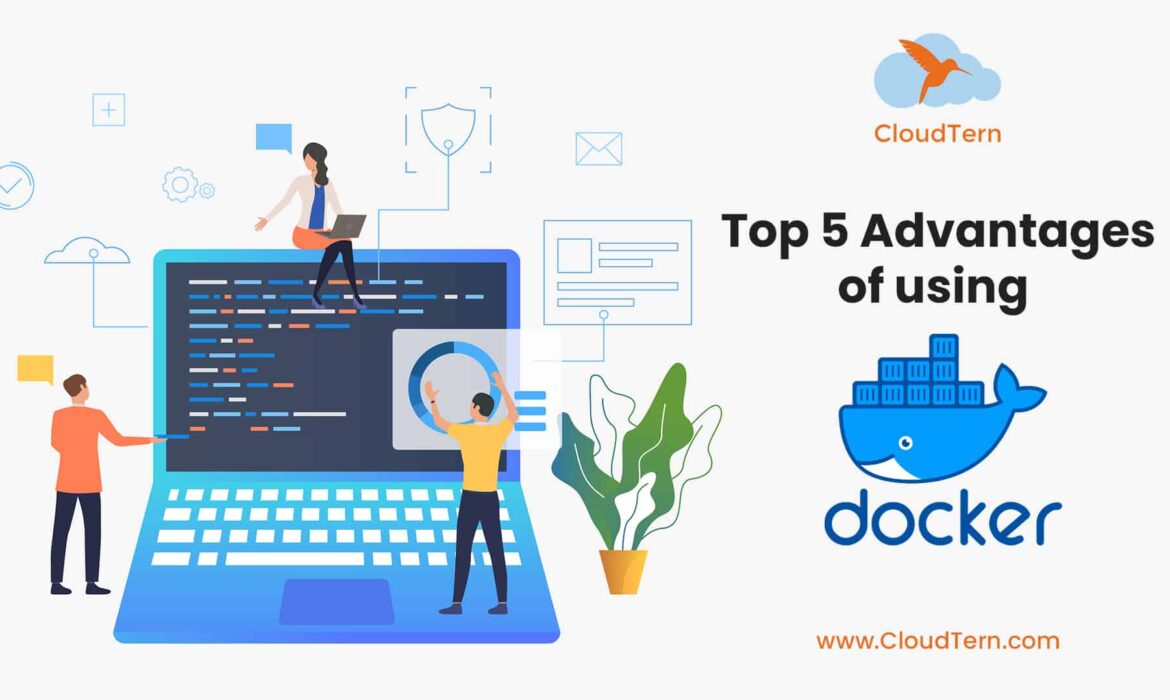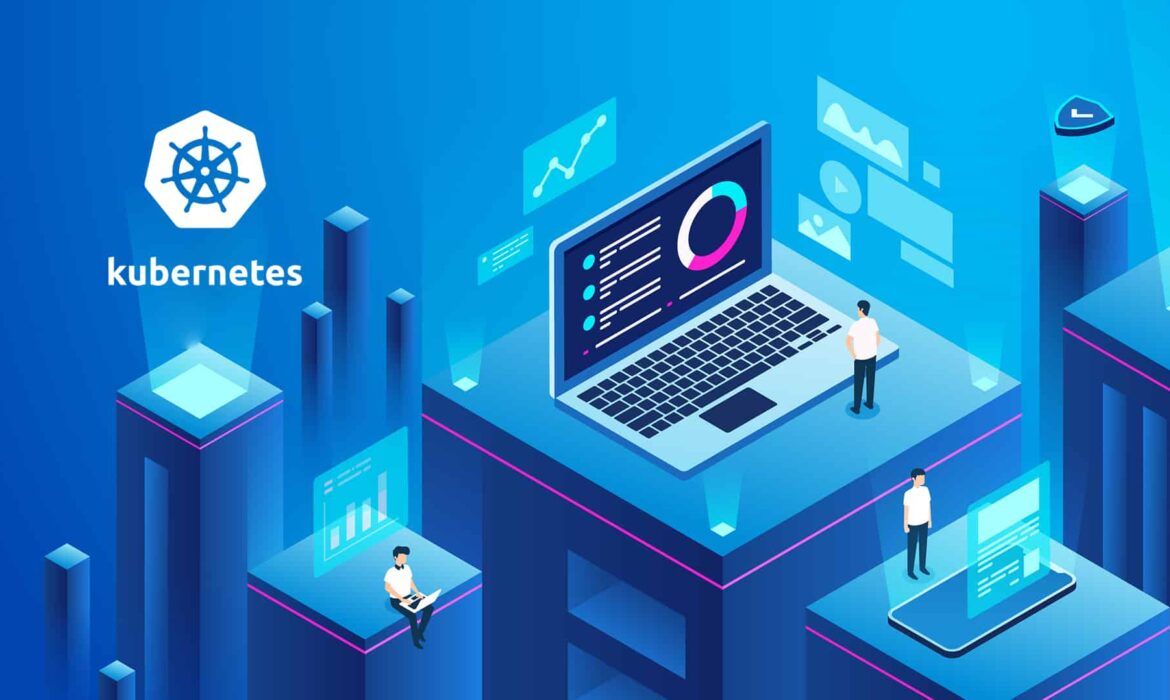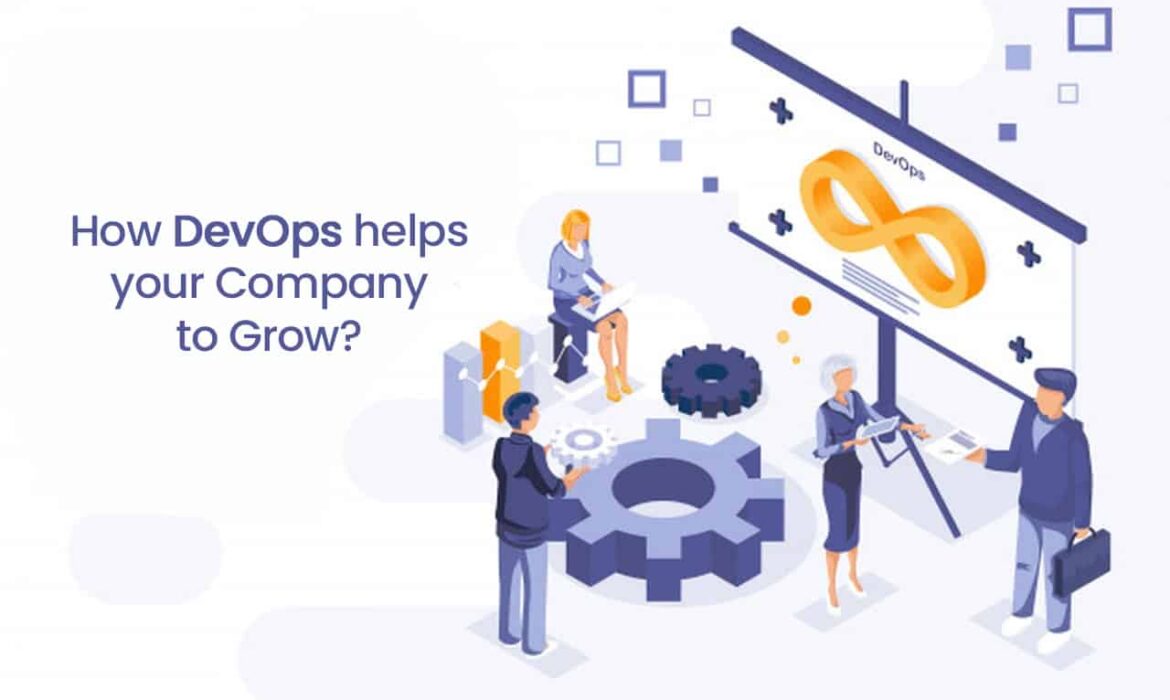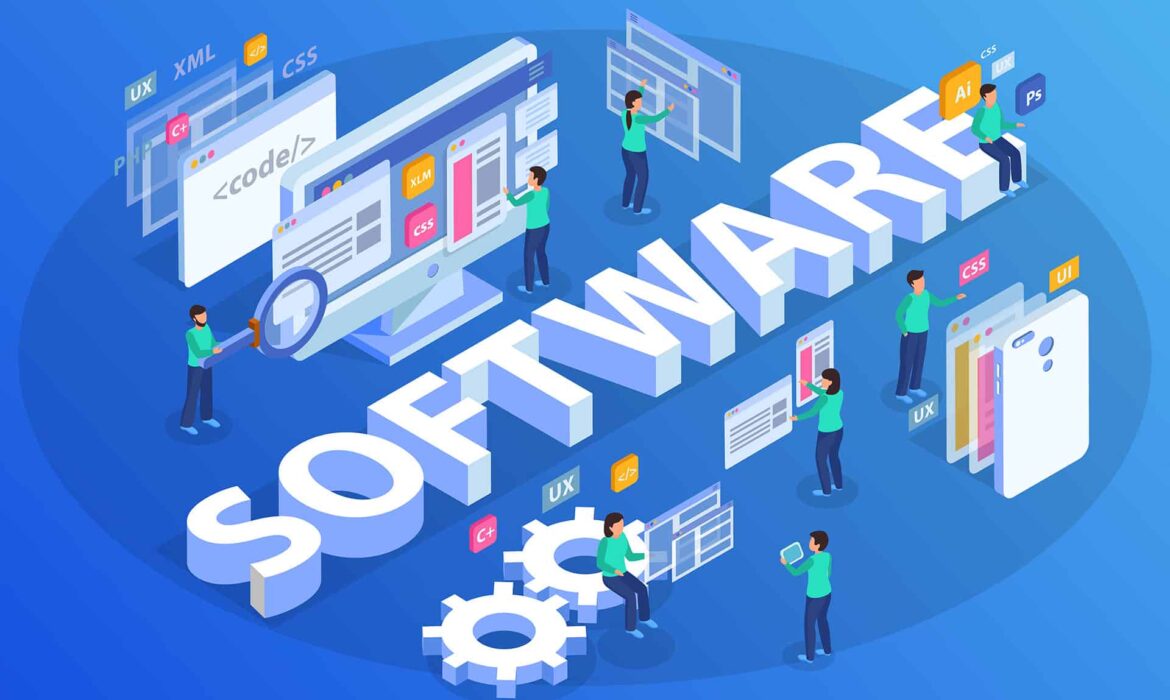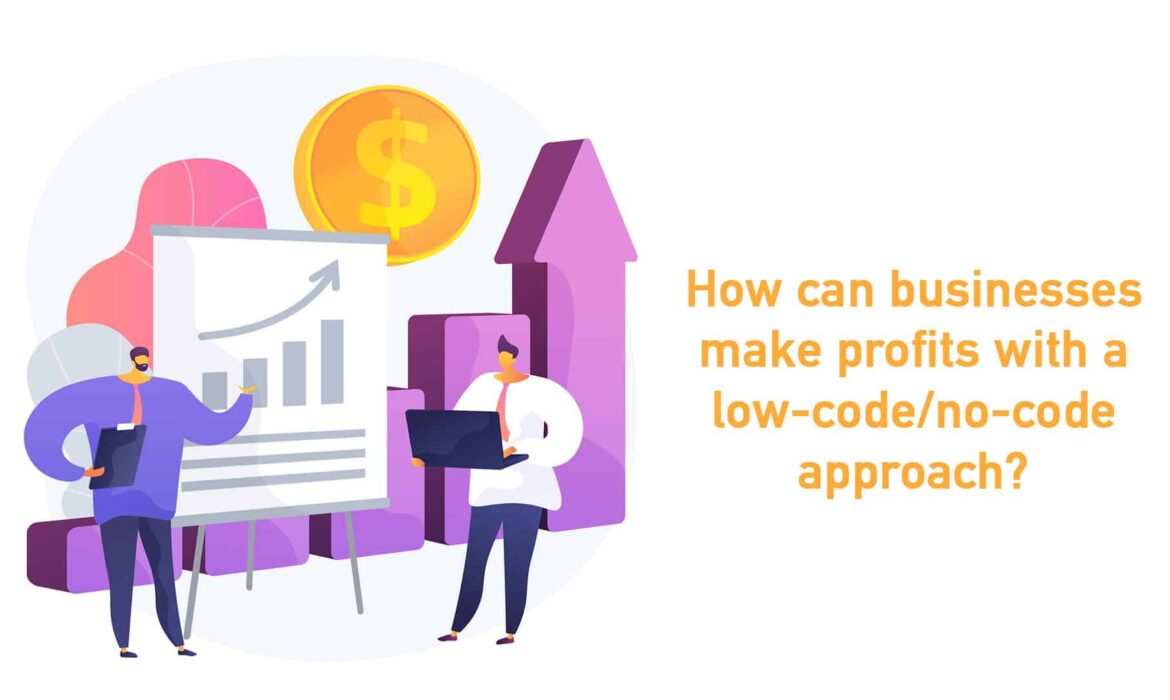DevOps for Business Intelligence
DevOps started off as a methodology that integrates Developers and Operations teams to work in tandem in software development projects. It facilitates seamless coordination and communication between teams, reduces time from idea to market and significantly improves operational efficiencies while optimizing costs. Today, DevOps has rapidly evolved to include several other entities of IT systems. A new addition is Business intelligence.
DevOps jelled well with Big Data as both methodologies are contemporary and complement each other in managing of massive volumes of live data moving between development and production that is maintained relevant via seamless coordination between teams. When it comes to business intelligence, data warehousing and analytics are two important components that need to be managed. As BI deals with batches of data, it doesn’t easily integrate with the DevOps environment by default.
Managing Data Warehousing with DevOps
A data warehouse is a central data repository that collects data from various disparate data sources in and outside the organization and hosts them in a central location allowing authorized people and reporting and analytics tools to access it from any location. Managing a robust and sophisticated data warehouse is a challenge as multiple stakeholders are involved in making a change which makes deployments rather slow and time-consuming. Implementing DevOps here can be a revolutionary thing as you can combine data administration teams and data engineering teams to collaborate on data projects. While a data engineer informs potential features that are being introduced to the system, the data administrator can envisage production challenges and make changes accordingly. With cross-functional teams and automated testing in place, production issues can be eliminated. Together, they can build a powerful automation pipeline that comprises data source analysis, testing, documentation, deployment etc.
However, introducing DevOps for data warehouse management is not a cakewalk. For instance, you cannot simply backup data and revert to the backup as and when required. When you revert to a last week’s backup, what about the changes made to the data by several applications?
DevOps for Analytics
The analytics industry is going through a transformation as well. Contrary to the traditional analytics environment that uses a single business intelligence solution for all IT needs, modern businesses implement multiple BI tools for different analytical purposes. The complexity is that all these BI tools share data between them and there is no central management of BI tools. Another issue is that data scientists design models and algorithms for specific data sets to gain deeper insights and offer predictions. However, when these data sets are deployed to the production environment, they serve a temporary purpose. As data sets outgrow, they become irrelevant which means continuous monitoring and improvement is required. The rate at which the data drifting happens is enormous and traditional analytics solutions are inefficient to manage this speed and diversity. This is where DevOps comes to the rescue.
DevOps helps businesses integrate data flow designs and operations to automate and monitor data enabling them to deliver better applications faster. Automation enables organizations to build high performing and reliable build-deploy iterative data pipelines for improving data quality, accelerate delivery and reduce labor and operational costs. Monitoring data for health, speed and consumption-ready status enable organizations to reduce blindness and eliminate performance issues. It means a reliable feedback loop is created that covers data health, privacy and data delivery for ensuring smooth flow of operations for planned as well as unexpected changes.
The Bottom Line
Bringing DevOps into the BI realm is not an easy task as BI environments are not suitably designed for DevOps. However, businesses are now exploring this option. Bringing DevOps into the BI segment gives situational awareness to businesses as they can make informed decisions when they gain insights into relevant data added from multiple sources. Moreover, it brings great collaboration between teams, allows better integration between different application layers while helping businesses to explore and quickly tap into new markets. Most importantly, it makes your business future-proof.
Top 5 Advantages of using Docker
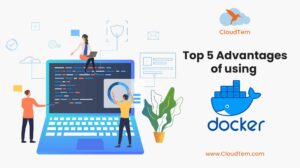 As businesses are aggressively moving workloads to cloud environments, containerization is turning out to be a necessity for every business in recent times.
As businesses are aggressively moving workloads to cloud environments, containerization is turning out to be a necessity for every business in recent times.
Containerization enables organizations to virtualize the operating system and deploy applications in isolated spaces called containers packed with all libraries, dependencies, configuration files etc.
The container market is rapidly evolving. According to MarketsandMarkets, the global application containerization market earned a revenue of $1.2 billion in 2018 and is expected to touch $4.98 billion by 2023, growing at a CAGR of 32.9% during 2018 and 2023.
The Dominance of Docker
The containerization market is dominated by Docker. In fact, it was Docker that made the containerization concept popular. According to Docker, the company hosts 7 million+ applications with 13 billion+ monthly image downloads and 11 million+ developers involved in the process. Adobe, Netflix, PayPal, Splunk, Verizon are some of the enterprises that use Docker.
Virtual Machine Vs Docker
Here are the top 5 benefits of using Docker:
1) Consistent Environment
Consistency is a key benefit of Docker wherein developers run an application in a consistent environment right from design and development to production and maintenance. As such, the application behaves the same way in different environments, eliminating production issues. With predictable environments in place, your developers spend more time on introducing quality features to the application instead of debugging errors and resolving configuration/compatibility issues.
2) Speed and Agility
Speed and agility is another key benefit of Docker. It allows you to instantly create containers for every process and deploy them in seconds. As you don’t have to boot the OS, the process is done lightning fast. Moreover, you can instantly create, destroy, stop or start a container with ease. By simply creating a configuration file using YAML, you can automate deployment and scale the infrastructure at ease.
Docker increases the speed and efficiency of your CI/CD pipeline as you can create a container image and use it across the pipeline while running non-dependant tasks in parallel. It brings faster time to market and increases productivity as well. The ability to commit changes and version-control Docker images enable you to instantly roll back to an earlier version in case a new change breaks the environment.
3) Efficiently Management of Multi-Cloud Environments
Multi-cloud environments are gaining popularity in recent times. In a multi-cloud environment, each cloud comes with different configurations, policies and processes and are managed using different infrastructure management tools. However, Docker containers can be moved across any environment. For instance, you can run a container in an AWS EC2 instance and then seamlessly move it to a Google Cloud Platform environment with ease. However, keep in mind that data inside the container is permanently destroyed once the container is destroyed. So, ensure that you back up the required data.
4) Security
Docker environments are highly secure. Applications that are running in Docker containers are isolated from each other wherein one container cannot check the processes running in another container. Similarly, each container possesses its own resources and doesn’t interact with the resources of other containers. They use the resources allocated to them. As such, you gain more control over the traffic flow. When the application reaches its end of life, you can simply delete its container, making a clean app removal.
5) Optimized Costs
While features and performance are key considerations of any IT product, Return on Investment (ROI) cannot be ignored. The good thing with Docker is that it enables you to significantly reduce infrastructure costs. Right from employee strength to server costs, Docker enables you to run applications at minimal costs when compared with VMs and other technologies. With smaller engineering teams and reduced infrastructure costs, you can significantly save on operational costs and increase your ROI.
How Kubernetes Helps in Transforming your Business?
Today, the majority of businesses are going through a digital transformation. While the digital journey brings speed, efficiency and mobility solutions to the table, it comes with certain challenges too. As you migrate the existing infrastructure to the cloud, you’ll have to deal with legacy issues. In the cloud, you have to manage a wide range of tools and services. The implementation of DevOps to manage your infrastructure gives you additional responsibilities.
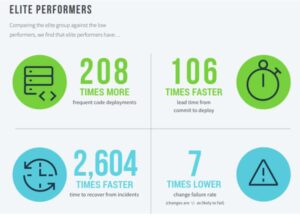 The DevOps environment demands frequent and faster deployments every day. According to the State of the DevOps 2019 report, elite performers make 209 times more deployments than low performers.
The DevOps environment demands frequent and faster deployments every day. According to the State of the DevOps 2019 report, elite performers make 209 times more deployments than low performers.
They gain 106 times faster lead time from commit to deploy with a 7% change fail rate. The time to recover from incidents is 2,604 times faster than low performers.
Gone are the days when IT development was confined to software companies. Today, every enterprise develops and manages a wide range of software applications.
As such, tracking and managing automated deployments is a challenge. Kubernetes is here to help.
An Overview of Kubernetes
Kubernetes is a popular tool that enables administrators to orchestrate and manage server cluster workloads in a datacenter, including automation and declarative configuration. Also known as K8s, the Kubernetes open-source platform helps you in efficiently managing containerized apps and services. You can simultaneously run and manage multiple servers while providing access to resources 24/7. This is achieved with the implementation of distributed data processing that allows Kubernetes to run multiple servers of different kinds installed at different locations and operating on different platforms.
The Traditional Software Development Environment
In a traditional operations environment, multiple applications are hosted on a single physical server. It resulted in an inefficient allocation of resources as some applications consumed more resources while others were left out to underperform. Installing each application on a separate server consumed huge infrastructure expenses. Moreover, each server was underutilized. Virtual machines came as a solution to this issue. A virtual machine runs the operating system on top of the virtual hardware and contains all the required elements to run the applications. Using virtualization, administrators were able to isolate applications between different VMs and run multiple applications on the same physical machine.
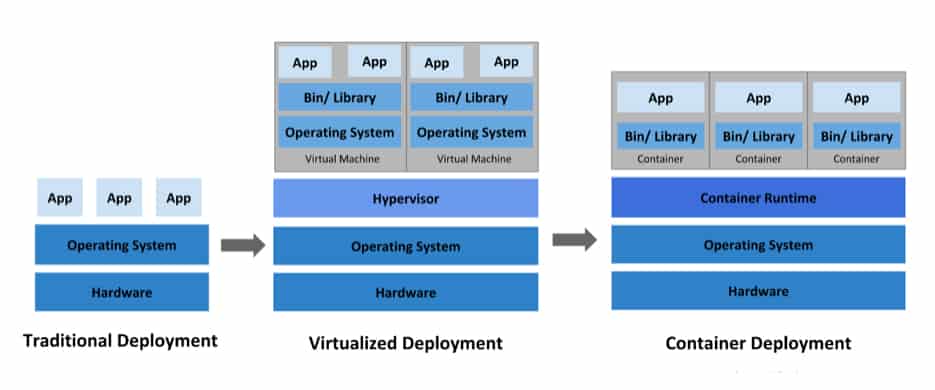
The Advent of Containerization
The container technology takes this system to a next level. A container is a software package that is bundled with all the required components of the app such as binaries, dependencies, libraries and configuration files while isolating it from the underlying hardware. Containers are lightweight and enable administrators to seamlessly deploy workloads across multiple environments. Keeping the base image consistent, developers can run the app in any environment. By sharing the host OS, containers eliminate the need for libraries and boot OS and therefore become lightweight. They are highly scalable, highly portable, offer agility and provide application-centric management.
Today, enterprises simultaneously run hundreds of containers in different environments. As such, managing the deployment of containers, tracking each container and setting up a new container when a container is down is a challenge. Kubernetes helps you to define your deployment patterns and efficiently manage resilience in a distributed systems environment.
Kubernetes and Containerization
Kubernetes is the most popular container-deployment system for the following reasons. Firstly, it enables you to provide access to containers via an IP address or a DNS name. In addition to service discovery, it helps you to perform load balancing for routing traffic to the right container. Secondly, infrastructure management becomes easy as you can define the desired state of a container. At any given point in time, you can easily roll back the system to its desired state and create and terminate containers at your will. It supports self-healing wherein containers are automatically replaced or restarted. Be it local storage or a public cloud datacenter, Kubernetes allows you to mount storage automatically for efficient orchestration of storage.
While managing a cluster of servers, you can define resource allocation (RAM, CPU) for each container and Kubernetes will optimize the infrastructure by rightly fitting containers onto the nodes. It also allows you to securely store and manage secret information such as passwords, keys etc. without exposing them in the configuration of the stack.
What is it for Businesses?
Powered by Cloud Native Cloud Foundation (CNCF), Kubernetes is the fastest-growing open-source software which means you are entitled to use a wide range of open-source tools developed for Kubernetes. Portability is a big benefit of Kubernetes. It means you not only manage the automatic deployment of large clusters of servers but also moves them between multi-cloud environments with ease.
Kubernetes offers high scalability enabling you to run containers or different environments such as a virtual machine, public, cloud, bare metal. Organizations enjoy high availability at the infrastructure level as well as the application level. You can configure it to support multi-node replication or add a storage layer for the high availability of stateful workloads. Kubernetes uses a simple client-server architecture but offers amazing benefits such as auto-scaling, rolling updates, self-healing etc. Backed by Google, you can rest assured of its reliability and credibility.
Businesses hugely benefit from faster time to market, increased productivity, high availability, high scalability, IT cost optimization, seamless migration between multi-cloud environments and many more. Most importantly, it makes your business future-proof.
Are you leveraging the benefits of Kubernetes? If not, CloudTern is here to help!
Top 10 Benefits of AWS in 2021
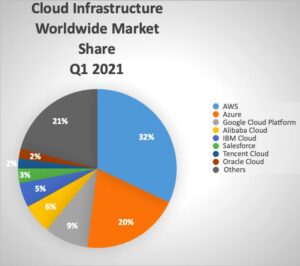 Technology is changing rapidly every year. The year 2021 is no different. However, one thing that remains constant here is the position of AWS in the public cloud infrastructure segment. AWS has been a leader in this segment since its advent.
Technology is changing rapidly every year. The year 2021 is no different. However, one thing that remains constant here is the position of AWS in the public cloud infrastructure segment. AWS has been a leader in this segment since its advent.
According to Statista, AWS accounted for a market share of 32% in Q1 2021 earning revenues of $39 billion which is a 37% increase from Q1 2020. Azure and Google Cloud Platform recorded a market share of 20% and 9% respectively.
Here are the top 10 benefits offered by AWS in 2021:
1) Access to a World-class Technology Stack
Not every business has the luxury of laying hands on a world-class technology stack, owing to budget constraints and the lack of expert staff. Thanks to the AWS cloud, today, even small and medium businesses have access to cutting-edge technologies. It brings all players onto the same platform creating equal opportunities for everyone. Now, small and medium businesses can compete with enterprise solutions.
2) Always Innovating
Innovation is a key component of AWS offerings. The AWS team is committed to constantly driving innovation into the cloud infrastructure offering. This is one of the main reasons why top brands use AWS. Though Azure and GCP can compete with AWS in the pricing structure, innovation is what keeps AWS two steps away from its competitors. Being an AWS customer, you’re assured of cutting-edge technologies at cost-effective prices.
3) Always Economic
While AWS offers cutting-edge technologies, it manages to maintain an affordable pricing structure. As you only pay for the resources consumed without making any upfront commitments or long-term contracts, costs are predictable and economic as well. You can visit the AWS Economics Center to know about how organizations are optimizing resources and saving costs. According to a Cloud Value Benchmarking study, on average, businesses have saved 27.4% reduction per user, 57.9% increase in VM managed per user, 37.1% decrease in time to market new features and 56.7% decrease in downtime. All these aspects add up to your savings. AWS offers a calculator to keep track of all your cloud expenses.
4) Highly Flexible
One of the biggest advantages of AWS is its flexibility which allows you to customize your technology stack. Be it a programming language, operating system, database or web application platform, you can pick and choose your stack and easily load them into the virtual environment offered by AWS. Similarly, you can choose an out-of-box platform or customize and configure the entire stack from scratch.
5) Easy to Use
AWS solutions are designed with ease of use in mind. Whether you are a novice user or a technology expert, AWS makes it easy to move your applications to the cloud. You can take advantage of the AWS console to access the web application platform. Alternatively, you can use the web services APIs to do so. AWS offers extensive documentation on how to use these web services APIs making your job easy and fast.
6) Security at its Best
Security and better control over the datacenter were the two important barriers to cloud adoption for a long time. However, AWS takes security pretty seriously. AWS security is based on a shared model wherein AWS controls the security on the cloud infrastructure while the customer handles security at the customer endpoint. Data is distributed across multiple datacenters making it resilient, faster to access and quick to recover from a disaster. All datacenters are secured with end-to-end protection. The company uses firewalls to ensure data is protected and encrypted while moving across endpoints. It offers the Identity and Access Management feature wherein users are provided with role-based access controls. Multi-factor authentication is available too.
7) Scale at your Pace
Taking advantage of the massive infrastructure and the pay-per-use model, you can start small and scale at your own pace. AWS offers Elastic Load Balancing and Auto Scaling features that enable you to automatically scale resources as per traffic surges. Automation of Horizontal scaling comes out of the box. For automating vertical scaling, you need to configure AWS Ops Automator V2.
8) Comprehensive Cloud Solutions
With AWS, you don’t have to look in other directions. AWS is a single-stop solution for all your cloud infrastructure needs. It offers a wide range of tools and services. With datacenters located in 190 countries, you can scale globally. In addition to its massive infrastructure, AWS has a wide partner network that helps you with required tools for every cloud need, right from migrating to the cloud and developing in the cloud to optimizing cloud operations and managing workloads.
9) Extensive Support
While AWS solutions are easy to use, the company offers extensive documentation and support when it comes to walking you through the installation or configuration of tools and services. AWS website contains documentation, user guides, videos, forums and blogs to help you with the stuff. You can take advantage of the vibrant community as well.
10) The Brand Matters
Along with all the above mentioned, the brand value matters too. AWS is the leader in the cloud infrastructure segment and delivers cutting-edge solutions. When you subscribe to AWS solutions, it means your business operations are powered by world-class technologies that are second to none. So, it gives a big boost to your operational efficiencies and increases trust among customers.
How DevOps helps your Company to Grow?
When DevOps arrived onto the technology platform, industry experts opined that it is going to revolutionize the IT world. However, businesses were slow to embrace this methodology. The reason was that many businesses could not understand what DevOps is actually about. As it is not a tool or a technology, people derive their own definitions, processes and methods. DevOps is a methodology that integrates Development and Operations teams to work as a single entity right through the product lifecycle to deliver quality software faster. According to Research Dive, the global DevOps market was valued at $4.46 billion in 2020. This value is expected to reach $23.36 billion by 2027, growing at a CAGR of 22.9% during 2020-2027.
Here is how DevOps helps your company to grow:
Redefining Organizational Culture
While DevOps started off as a combination of development and operations teams, it has now evolved to include everyone involved in the product lifecycle. DevOps brings cross-functional teams into the picture comprising people from design, development, QA, operations, security etc. It facilitates seamless collaboration and trust between teams, breaking silos. With rightly aligned priorities and shared goals, every member of the team gains clear visibility into the progress of the project, resulting in a quality product delivered in time. It gives you better control over tools, processes and projects.
Redefining Technical Processes
Faster time to market is a key requirement to stay in the competition in today’s fast-paced world. However, speed shouldn’t kill the quality. DevOps allows you to deliver faster while not compromising on quality. Continuous Integration / Continuous Delivery (CI/CD) is a notable feature of DevOps.
In a traditional waterfall software development model, developers write the code first which is then sent to the testing team. If there are errors, the code is returned to developers for corrections. When the code successfully passes the test, it is sent to the staging environment and then deployed to production. To deliver an update, the product has to go through the entire process again.
With the advent of Microservices and agile methodologies, developers started developing the software as modular independent services in smaller and incremental cycles. DevOps helps businesses to manage microservices, SOA and agile environments in a better way. It integrates different disparate systems to work as a cohesive unit. It allows you to build a CI/CD pipeline and automate the entire process.
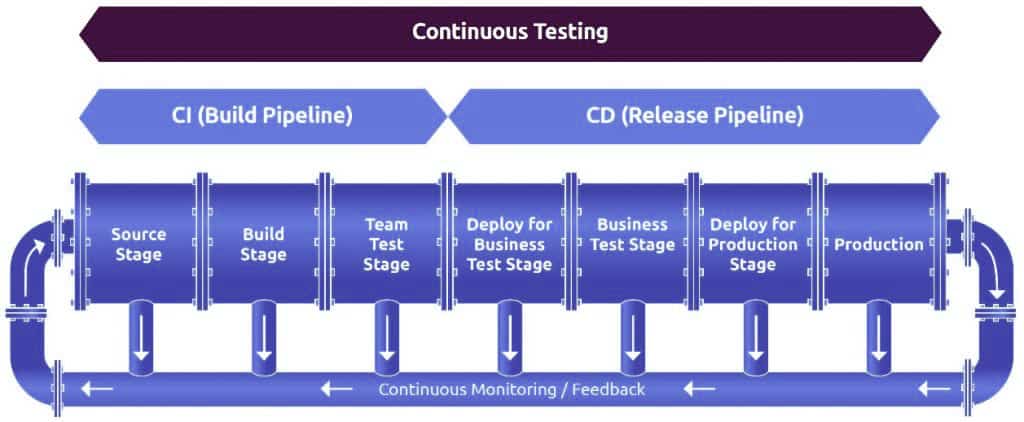
In this CI/CD pipeline, coders write the code and commit it to a version control system that acts as a central repository. When a change is detected, the CI server automatically runs the builds. Passed builds are moved to the deployment segment or the image repository. The automation deployment tool picks the artifacts from there are deploys them to production. There is a continuous monitoring tool that offers feedback from which you can gain clear insights into the performance of the product. By using value stream mapping, you can quickly identify bottlenecks and optimize every process. Response times get quicker too. With continuous integration, continuous testing, continuous deployment and continuous feedback, DevOps enables you to quickly deliver quality software.
Jenkins, Gitlab, CircleCI, TeamCity and Bamboo are some of the best CI tools that help you to automate and orchestrate the entire software development product lifecycle.
Redefining Business Processes
DevOps brings a cultural shift across the organization. Now, developers understand the challenges faced by the Ops guys and develop the code accordingly. Similarly, operations guys are aware of how the code is being developed and how it performs in production at an early stage. As each member is responsible for the overall quality of the product, every team equally cares for the efficient execution of tasks of other teams. They motivate and encourage other members wherever possible. With a cross-functional team working together, employees are cross-trained and up-skilled as well. It not only brings more value to the organization but also delivers more value to your customers.
Innovation is a key requirement to stay ahead of the competition. DevOps gives developers extra time to experiment and create new products or tweak existing products. With automated testing and automated security built into the pipeline, you don’t have to worry about breaking anything. Without disrupting the project, developers can validate the feasibility of ideas and introduce innovation into business processes. It also helps them learn customer requirements and user experiences in a better way and meet/exceed their expectations. Enhanced customer satisfaction helps you retain your customers and gain new referrals too.
The Bottom Line
DevOps benefits are equally distributed across the business, technical or cultural segments of an organization. A good DevOps strategy helps an organization sustainably grow in all aspects of the business. However, streamlining an end-to-end delivery pipeline is a challenge. Once the right DevOps strategy is designed, you can fully leverage all these benefits.
The key here is choosing the right DevOps partner!
Cloud Development – All You Need to Know
In today’s cloud era, every IT resource is hosted in the cloud and delivered over the Internet via a pay-per-use subscription model. While the amazing benefits offered by the cloud have inspired the software industry to embrace cloud development, the recent pandemic has forced everyone to move towards the digital world. As work-from-home environments are here to stay, cloud development has now become more important than ever.
What is Cloud Development?
 Cloud development is about developing software applications using computing infrastructure that is hosted in the cloud. Instead of building and managing your servers and physical hardware, you can access technology services hosted in the cloud via a pay-per-use model.
Cloud development is about developing software applications using computing infrastructure that is hosted in the cloud. Instead of building and managing your servers and physical hardware, you can access technology services hosted in the cloud via a pay-per-use model.
Right from servers, data storage and network resources to OS, Middleware and Run-time environment, everything can be accessed over the Internet.
In addition, you gain access to ready-made cloud solutions for monitoring, analytics etc. Amazon is a leading provider of public cloud solutions while VMware tops the private cloud services segment.
Cloud-based apps are highly scalable and flexible. They can be accessed from any device, any location using APIs. The app data is stored in the cloud and resides on the user’s device as a cache enabling the user to work offline. When the app is connected online, the cache data gets updated. Google Docs, Evernote, Canva, Dropbox are a few popular examples of cloud-based apps.
Why is Cloud Development Popular?
Cloud development offers amazing benefits to organizations. Firstly, it eliminates the need to invest heavily in on-premise infrastructure and licensing costs. With a pay-per-use model, you can only pay for the services used. It gives you access to cutting-edge technologies at cost-effective prices. Secondly, cloud development facilitates seamless collaboration between teams located in different geo-locations. Thirdly, cloud development offers high scalability, flexibility, unlimited storage, faster time to market and automatic recovery options. In addition, it automatically updates the software and performs maintenance which means you can focus on building quality software products.
Amazon Web Services (AWS), Microsoft Azure, Google Cloud Platform are the leading providers of cloud development solutions.
Web Apps are not Cloud Apps
Often, cloud development is confused with web development. It is important to understand that all cloud apps are web apps but all web apps are not cloud apps. To be precise, cloud-based apps are an advanced version of web-based apps. Web-based apps depend on browsers and scalability and customization is limited. The data is stored on a single data server. You can’t work offline with web-based apps. On the other hand, cloud apps are highly scalable and customizable. The data is stored across multiple data-centers using replication techniques and you can work offline as well.
Cloud Development Challenges
While cloud development seems a great option, it comes with certain challenges. Cloud development demands seamless collaboration between different teams such as developers, designers, QA managers, data analysts, DevOps engineers etc. The project involves different cloud technologies such as AWS, Azure, GCP etc. So, people working on cloud apps should have good knowledge about various platforms and be able to integrate apps with different services using APIs.
Secondly, cloud development brings security concerns. As such, security should be implemented right into the CI/CD pipeline so that it can become a part of automation. It is recommended to separate app data from app architecture code. Thirdly, cloud development offers higher scalability. However, scalability that is not optimized will overrun your cloud budgets. As such, it is important to have clear network visibility to gain better control over cloud infrastructure.
Conclusion
Mobility solutions, disaster recovery, Flexibility and reduced workloads are some of the key drivers to cloud adoption. However, cloud development requires expert knowledge of cloud technologies. When rightly implemented, cloud development improves your operational efficiencies and optimizes costs while improving user experience.
Top 5 benefits of cloud-based software development in 2021
 The advent of cloud computing technology has disrupted the technology world. Today, it is a challenge to identify a service that is not delivered over the cloud.
The advent of cloud computing technology has disrupted the technology world. Today, it is a challenge to identify a service that is not delivered over the cloud.
While every industry benefitted from this technology trend, the software segment was one of the first industries that started leveraging this trend. The buzz around cloud-based software development is increasing year after year.
2021 is not going to be any different. Together with AI, cloud technology is helping businesses deliver quality products that are transforming the world.
Here are the top 5 benefits of cloud-based software development in 2021.
1) Operational Efficiency at its best
While enterprises have the budgets and expert staff to use a technology stack that comprises cutting-edge technologies, small and medium companies have to adjust with legacy tools. However, cloud solutions bring everyone onto the same ground. With minimal investment, you can lay hands on world-class technology solutions to increase efficiencies and be competitive.
Another significant benefit of cloud-based software development is fast and automated deployments. Developers can build continuous integration (CI) / Continuous Deployment (CD) pipelines and automate the entire process to easily build and deploy applications. Similarly, cloud-based apps can be effectively monitored. Based on predefined KPIs, you can analyze the performance of each application using cloud-based monitoring tools. The server logs help you identify issues and improve the efficiency of the product.
2) Mobility at its best
One of the biggest advantages of cloud-based software development is mobility. Regardless of your location, platform or device, cloud resources can be accessed by every authorized user 24/7. While the software team can remotely work on the product, endusers can access it from anywhere, anytime. Not only does it facilitate seamless collaboration between different teams, but it increases productivity as well. Considering the post-covid lockdown situations, mobility solutions have become a key requirement of every software development project in 2021.
3) Adaptability at its best
When it comes to cloud technology, innovation happens at a rapid pace. Today’s innovation can become tomorrow’s legacy. As such, businesses should proactively monitor technology trends and quickly incorporate necessary changes to their existing technology stack. Being future-proof is the key to sustaining your business operations. Cloud-based software development offers the flexibility to quickly realign product architecture and stay ahead of the competition.
4) Cost-optimization at its best
Cost savings is a huge benefit offered by cloud-based software development. You don’t need to invest in expensive physical hardware and licensing fee. You don’t need to worry about maintenance and updates as well. Right from provisioning the infrastructure to maintenance and security, the cloud provider handles all infrastructure-related tasks. It means you can quickly start delivering quality products. Cloud solutions are delivered via a pay-per-use subscription model. This feature enables you to dynamically scale up resources. Moreover, a lesser carbon footprint means a better world.
5) Scalability at its best
In a software development project, different teams have different resource requirements. For instance, developers require demo production environments to check the performance of a product. When you set up physical infrastructure, scaling up resources becomes expensive and time-consuming. Cloud infrastructure enables you to instantly scale up resources while only paying for the resources used. Similarly, Ops teams can ramp up production during peak hours and scale down during odd hours. The most important thing is that scaling can be automated.
However, it is important to consider that cloud-based software development is not easy compared to traditional software development. Security and privacy have to be prioritized. The lack of expert staff can be a big challenge for companies in fully leveraging this trend. When rightly done, cloud-based software development in 2021 keeps your business future-proof.
Top 10 Myths about Software Product Development
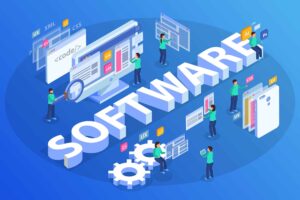 As businesses are embarking on the digitalization journey, software solutions have become a central point of all business operations.
As businesses are embarking on the digitalization journey, software solutions have become a central point of all business operations.
According to Grand View Research, the business software and services market earned a revenue of $389.86 billion in 2020. This value is expected to grow at a CAGR of 11.3% between 2021 and 2028.
Right from the time when FORTRAN was released in the 50s, the software industry has been a favourite vertical for many.
At the same time, several myths and misconceptions are floating around this space.
Here are the top 10 myths about software product development.
1) The Most Popular Language is the Best One
Each developer has a favourite programming language and obviously, it will be the one that he is working on. The general notion is that the most popular programming language is the best in the business. However, it is not true. Different languages serve different purposes. You can’t rank one over the other. While choosing a programming language, consider certain aspects such as business requirements, existing technology stack, developers’ expertise, license and usage costs etc.
2) Coding Knowledge is enough to Build a Product
Most novice and inexperienced developers believe that coding knowledge is enough to build a product. While it is true that you need to learn the code to build a product, software development is not just about knowing how to write the code. You need to have domain knowledge, understand the subject area, think from a customer/user perspective etc. You should be able to think beyond the IT space.
3) Software Development is Expensive
Considering the fact that software engineers are highly paid in the industry, small and medium businesses tend to purchase generic software instead of choosing custom application development. However, a ‘one-size-fits-all’ solution doesn’t suit today’s dynamically changing IT era. When business and user requirements change, realigning IT solutions to meet these needs becomes a challenge. Moreover, when the company grows, you’ll have to rewrite the software.
4) Latest Tools are not always the Best
Often, people believe that using the latest cutting edge tools will make their technology stack robust, powerful and efficient. However, it is not always true. The criteria in choosing a software tool should be the performance, functionality, features, being future-proof, adaptability etc. and not on its popularity. If the tool is not backward-compatible, you’ll have to rewrite your app every time there is an update to the code. So, popularity is not a silver bullet.
5) More People in the Team means Faster Time to Market
In today’s fast-paced world, businesses are required to deliver products faster. As such, people tend to hire more developers to quickly get the work done. Especially, organizations hire more software engineers when the project fails to meet the deadlines. However, adding software engineers to the team doesn’t always expedite the process. It can sometimes become a bottleneck, owing to communication and collaboration issues. A better way is to streamline and orchestrate operations, design the right CI/CD pipelines, apply automation etc.
6) The Project is Done once it goes Live
A software product development project involving various phases such as planning, design and development, testing and deployment. A common notion is that the project is done once the app is uploaded to the app store. However, it is not true. Once the app is available for users, you should monitor the performance, collect feedback and apply changes and updates as and when required. When you don’t update the app for a long time, it might get removed from the app store. In today’s customer-centric product environment, a software engineer job will end only when the app ceases to exist for users.
7) Remote Software Development is Expensive
One common myth in software development circles is that outsourcing software development projects to remote teams incur huge expenses. When you outsource a project to a 3rd party, you will get access to highly experienced professionals. At the same time, you don’t have to deal with the complex hiring process, HR issues, insurance, labour benefits etc. It means you will get the best talent and only be paying for the technical expertise while receiving a quality product in return. The key here is to choose the right outsourcing company for your IT needs.
8) Agile development methods are Complex to Handle
While the IT world is rapidly innovating, agile and DevOps methodologies are becoming an inevitable option. However, some organizations are apprehensive to embrace these methods as they feel it will be difficult to manage cross-functional teams. Implementing a cultural change across the organization is another challenge. So, they continue with the waterfall development process. While the waterfall method seems easy at the beginning, you will end up struggling with flexibility, adaptability, mobility and UI/UX issues once the app is launched.
9) Quality Tools build Quality Products
Often, people believe that choosing a high-quality tool will help them to build a quality product. However, the quality of the product doesn’t depend only on a tool but requires critical thinking, analysis, project planning, communication and collaboration and coding skills etc. Choosing the right tool makes your job easier.
10) Outsourcing is a one-stop solution for all IT problems
Outsourcing is a popular method for organizations to get things done. However, a popular myth is that outsourcing is a one-stop solution for any IT problem and it solves all issues which is not true. Outsourcing is basically done so that the organization can focus on their core processes while the outsourced company handles their IT needs. However, outsourcing comes with its challenges. It is important to choose the right engagement model. When you choose a fixed price model, you might experience service level issues and quality issues. Choosing a dedicated team model is good but it again depends on the company that you select for that project.
Conclusion
Software development is a popular industry that is always evolving. Today’s innovation is tomorrow’s legacy. So, organizations should proactively monitor IT trends and customer requirements and adapt them quickly. Businesses that take application development seriously are sure to surge ahead of the competition.
Top 5 Things to Know before Starting Product Engineering
 As businesses are transitioning from a product-driven business model towards a customer-centric development approach, product engineering is rapidly gaining prominence in recent times.
As businesses are transitioning from a product-driven business model towards a customer-centric development approach, product engineering is rapidly gaining prominence in recent times.
Product engineering services integrate software development services with product management, enabling organizations to align user requirements and user experience with business requirements and objectives while optimizing costs.
As your products define your company, it is essential to implement product engineering in the right way to build quality products faster and better.
Here are top five things to know before starting product engineering.
1) Product Engineering Roles and Responsibilities
Before jumping onto product development, it is critical to understand the difference between product engineering and product development. Though both terms look similar from a general perspective, they differ in roles and responsibilities. While product development is a broader term that involves every phase of the product lifecycle, product engineering is part of this product development that combines software engineering and product management. Be it an app, software or a business system, the role of a product engineer is to cost-effectively design a customer-centric product, implementing the right technology stack and methodologies while aligning them with business objectives and goals. It involves planning, design, development, testing, deployment and sustainable maintenance of the product.
2) Full-Stack Engineer is Different from a Product Engineer
Often, a full-stack engineer is confused with a product engineer. A full-stack engineer is responsible for developing the back-end and front end systems and integrating them via APIs. However, their role is limited to managing software, tools and human resources within specific work frames. However, product engineers have a broader role to play, from designing and deploying the product to ensuring that customers are satisfied with the product. When you clearly identify this thin line and rightly define roles and responsibilities, product engineering becomes efficient, easy and cost-effective.
3) The Importance of the Right Product Development strategy
Product engineers are responsible for delivering a quality product while considering development timelines and budgets. So, defining the right strategy for product development is the key. Firstly, consider the operational aspect of the product such as its efficiency, consistent performance, security, usability and costs etc. Secondly, mobility is a key requirement in today’s cloud and mobile era. So, consider portability, adaptability, reusability and interoperability. Thirdly, a modular design offers flexibility, self-repairing/self-healing and scales easily. You can easily perform maintenance tasks. With the right development strategy in place, the project becomes easily manageable.
4) Drive Innovation with Calculated Risks
Innovation is a key ingredient of a product that not only adds value to the product but also helps you to sustain the competition. However, innovation comes with certain risks. So, researching, collecting and analysing relevant data, analysing the future functionality of the product, identifying market gaps in that area and coming up with the feasibility of the product is recommended. Before moving ahead with the development, it is important to document specifications requirements. It can be done during the time of preparing a roadmap and designing the architecture of the product.
5) Seamless Collaboration across Teams
When it comes to product development, different teams have different goals and metrics. Product engineers envisage a product that scores high in quality, usability and durability while delivering better functionality. On the other hand, designers are concerned about the aesthetics and appearance of the product. Delivering a higher user experience is their key requirement. While developers love adding more features, the network guys are against it. Their motto is that fewer changes mean more stability. As such, collaborating with various teams and coming up with a common plan helps you strike the right balance between features, design and stability and expedite the product while increasing the quality as well.
The business world is rapidly evolving, putting constant pressure on product development teams. Today, businesses should proactively monitor changing market trends and realign their IT solutions accordingly. Product engineering services help you to cost-effectively build quality products faster while ensuring higher customer satisfaction. Businesses that ignore product engineering are sure to stay out of competition.
How can businesses make profits with a low-code/no-code approach?
 The year 2021 seems to be the year of low-code / no-code app development. Though the low-code approach is still in its nascent stage, businesses are already reaping benefits from it.
The year 2021 seems to be the year of low-code / no-code app development. Though the low-code approach is still in its nascent stage, businesses are already reaping benefits from it.
The month of June has already seen some interesting announcements related to low-code / no-code app development.
Mendix Shows the Way
A notable announcement came from Mendix on June 8, 2021, stating that Dutch’s largest insurance company TVM has partnered with Mendix to develop Bumper, a low-code app that accelerates damage claims processes.
When a vehicle meets with an accident and gets damaged, you can instantly add the damage details into the app and get a detailed report of the damage. It helps you to smartly process damage claims while giving you insights into the process in real-time. As such, damage claims are quickly and efficiently processed while delivering high customer satisfaction.
Amazon Web Services (AWS) enters the Low-code Arena
On June 17 2021, Amazon Web Services (AWS) announced the launch of Workflow Studio, a low-code app development tool that enables organizations to quickly build applications with minimal coding skills on its public cloud platform. So, how do businesses benefit from this AWS low-code / no-code offering?
AWS cloud infrastructure accounts for a majority of cloud usage across the globe. As most businesses run their cloud networks on AWS, it becomes easy for them to take advantage of low-code solutions. While developers use this platform to quickly build applications, business teams with zero coding knowledge can create their apps for day to day business activities. Low-code apps offer faster time to market, reduce development costs, HR-related costs, office footprint etc. It also helps businesses in dealing with the shortage of qualified software professionals.
UI / UX gets better with Infragistics
Low-code or no-code app development platforms focus on enabling users to quickly build apps without writing lengthy code. Regardless of the level of coding, users can quickly build apps using drag-n-drop tools. However, User interface (UI) and User experience (UX) has been a concern for businesses. Currently, low code platforms help you to convert your idea into a prototype while not concentrating on the user experience. Infragistics is now filling this gap.
Cross-platform UI/UX toolmaker Infragistics released a new product Infragistics Ultimate 21.1 on 17th June 2021 which aims to deliver the right UI/UX designs while building low-code apps. It helps business teams to build highly intuitive dashboards with the right UI/UX design. Currently, the IT industry is in shortage of experienced UI/UX professionals. The average salary of a UX designer in the US is $96,529 along with a cash bonus of $5000 per year, as reported by Indeed. San Francisco is the highest paying state for UX designers, paying $140,975 per annum. With Infragistics Ultimate 21.1, organizations can incorporate UI/UX designs into the apps using pre-built templates and tools. As such, businesses can save huge amounts on UI/UX professionals’ salaries while also overcoming the shortage of experienced UI/UX professionals. It also expedites software development projects. As such, businesses deliver a much better customer experience.
Looking at the entrance of IT giants into this segment, it becomes evident that low-code is not just a business hype but is delivering results. So, organizations need to tap these business benefits at the earliest.
Here are 5 important areas wherein businesses are making profits with low-code development:
BizDevOps
BizDevOps is a new buzzword in the development circles in recent times. Low-code app development extends DevOps, incorporating business staff into cross-functional teams to develop customer-centric apps. When a team has a clear understanding of the value stream of the project, customer end-to-end lifecycle, company strategy and business objectives, quality products are built faster and with reduced costs. Shadow IT can be effectively controlled.
Accelerate your Microservices Journey
As businesses are moving away from monolithic systems towards a microservices architecture, low-code app platforms accelerate this process by enabling you to quickly re-architect monolith functions into microservices via APIs. You can start with low-risk apps that highly impact your business processes.
Self-serving customer-centric portals
Business teams that are involved with customers know what customers need from a business. Searching for the company services, getting a quote, paying bills, getting an answer is a few of them. As such, business teams without coding knowledge can quickly build a self-serving web portal to address customer-specific needs. In addition, companies can quickly build a mobile app and serve customers.
Optimized Costs
Low-code / no-code app development platforms eliminate the need to hire expensive software engineers. With low-code platforms, you can quickly and cost-effectively build and deploy business applications with ease. Advanced features and integration tasks can be handed over to senior developers. That way, you can reduce the software team size and the office footprint. While it saves operational costs, you don’t have to go through the tedious hiring process. Bonuses, insurances and HR-related compliances can be avoided too.
Customer satisfaction is the key
Apps build on low-code platforms are highly customer-centric as they are built by people who interact with customers. Often, sales guys complain about the inefficient processes designed by IT teams that will make the customer leave away before closing a sale. When the sales guy creates the app, he knows what should be included and what shouldn’t. So, businesses can make more sales and generate revenues. More satisfied customers mean repeat business and new references as well.
Several companies have already started to benefit from low-code app platforms. What about your organization?


